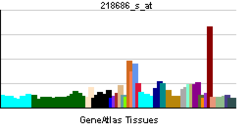We have seen that the cellular membrane is one of the most important part to the cell not only because it gives a limit to the cell, but also because of its content and attachment. The cell provide a boundary to the cell content, it has flippase and floppase/scramblases to maintain certain molecules in or outside its boundaries at a certain gradient, it is full of integrins of all kind of function, it contains the "nervous system" of the cell, through its reticulum endothelium, it connects rapidos with the Nucleus, and contains all kind of receptors to various stimulant.
We have also explained how receptors' (part of cellular membrane) failure lead to neoplastic transformation by over-stimulation related co-receptors susceptible to same growth factor! What we did not elaborate on was how a receptor can fail! AND HERE COME THE DERLINS and the IRHOMS!
-------------------------------------------------------------------------------------------------
WIKIPEDIA
Derlin-1 also known as degradation in endoplasmic reticulum protein 1 is a protein that in humans is encoded by the DERL1 gene.[1][2][3] It is a member of the rhomboid-like clan of polytopic membrane proteins.
Function
Derlin-1 is part of a complex (that includes VIMP, SEL1, HRD1, and HERP) that mediates endoplasmic-reticulum-associated degradation (ERAD) that detects misfolded proteins in the endoplasmic reticulum and targets them for destruction.[4]Clinical significance
Derlin 1 (DERL1) is up-regulated in metastatic canine mammary tumors as part of the unfolded protein response.======================================================================
IT is our understanding that growth factors, some of which are integrins, some are anchored to the membrane from which they need to spring into motion and complete their function. There is of course an enzyme that lyse the anchor. Enzymatic proteins in charge of freeing the growth factors, the cyclins and second messengers to the receptors belong to the clan of the Rhomboid-like proteins. The Derlins are part of a complexe as stated. To better understand the derlins let's go back to the cytosol where Ubiquitination attaches ubiquitin to a molecule tagging it to proteasome degradation, the derlins tag membrane proteins for degration by the ERAD complex in the Endoplasmic Reticulum. The derlin seems to impose a certain folding to the protein (growth hormone) a certain folding incompatible with their use, and therefore destine them to destruction.
It has been shown that upregulation of derlins completely rob the receptors from having appropriate stimulation by its corresponding growth factors. Decoy receptor will also take a portion of the growth receptor. Just remember they do not have the intracellular portion of the receptor so the second messenger will never be stimulated.
====================================================
The Irhoms are decoy Rhomboid like protein. They are like the enzyme but missing the catalytic teeth to cut the anchor but can attach to the integrins and change it enough to destine it to destruction by the ERAD.
" ZETTL ET AL.
iRhoms are a conserved subfamily of proteins related to rhomboid intramembrane serine proteases that lack key catalytic residues....iRhoms prevent the cleavage of potential rhomboid substrates by promoting their destabilization by endoplasmic reticulum (ER)-associated degradation;"
RHBDF1
From Wikipedia, the free encyclopedia
| Rhomboid 5 homolog 1 (Drosophila) | |||||
|---|---|---|---|---|---|
| Identifiers | |||||
| Symbols | RHBDF1; C16orf8; Dist1; EGFR-RS; gene-89; gene-90; hDist1 | ||||
| External IDs | OMIM: 614403 MGI: 104328 HomoloGene: 32085 GeneCards: RHBDF1 Gene | ||||
|
|||||
| RNA expression pattern | |||||
 |
|||||
| More reference expression data | |||||
| Orthologs | |||||
| Species | Human | Mouse | |||
| Entrez | 64285 | 13650 | |||
| Ensembl | ENSG00000007384 | ENSMUSG00000020282 | |||
| UniProt | Q96CC6 | Q6PIX5 | |||
| RefSeq (mRNA) | NM_022450 | NM_010117 | |||
| RefSeq (protein) | NP_071895 | NP_034247 | |||
| Location (UCSC) | Chr 16: 0.11 – 0.13 Mb |
Chr 11: 32.21 – 32.22 Mb |
|||
| PubMed search | [1] | [2] | |||
No comments:
Post a Comment